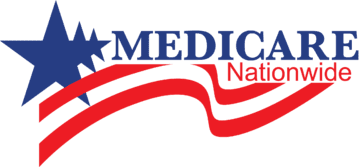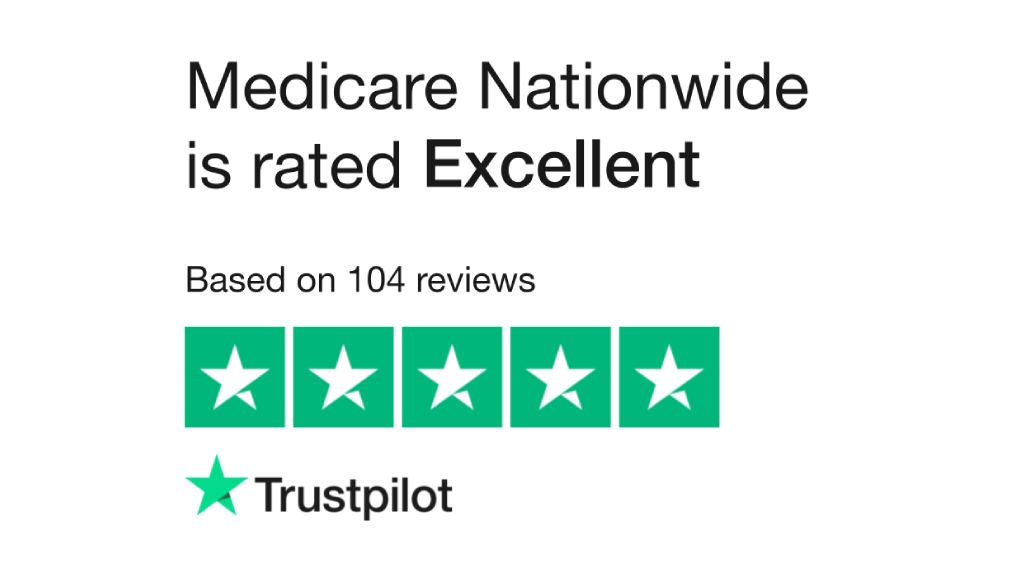Basics of Medicare Coverage
Before we jump into the potential gaps in Medicare that could create financial pitfalls, let’s go through the basics of Medicare coverage.
President Lyndon B. Johnson signed Medicare into law in 1965 to provide medical coverage for seniors over 65. In 1966, Medicare’s coverage took effect, as Americans age 65 and older were enrolled in Part A and millions of other seniors signed up for Part B. Nineteen million individuals signed up for Medicare during its first year. (1)
There are two major components to Medicare along with two separate and potentially optional parts. The parts of Medicare are designated by Part A, Part B, Part C, and Part D.
Part A covers hospitalizations. Part B covers doctors and specialists. Part C is the optional Medicare Advantage plan. Part D is prescription drug coverage.
Following are the details of the essential components of Medicare Part A and Part B. We will discuss Part C Medicare Advantage later in the article.
This appointment is meant to alleviate any concerns and there is no-cost or obligation to make a change.
Medicare Part A
Part A of Original Medicare covers the baseline hospital expenses that most seniors would require.
Part A covers:
- Inpatient care in a hospital
- Skilled nursing facility care
- Nursing home care
- Hospice care
- Home health.
Part A coverage, as with all parts of Medicare, is regulated and controlled by federal and state laws. Local coverage decisions are made by companies in each individual state. The companies authorized to operate in your state decide whether something is medically necessary to be covered.
Hospital care coverage includes any hospital expense critical to your inpatient care. This could include a semi-private room, meals, nursing services, medications, and any other service you would receive from the hospital.
Part A does not cover costs for a private room, unless medically necessary. It also does not cover the cost of blood.
Home health services include part-time skilled nursing, physical, speech, or occupational therapy, and medical equipment when ordered by your doctor.
Medicare Part B
Part B covers doctors and outpatient services. It includes preventive services in addition to normal medical services. Clinical research, ambulance services, durable medical equipment, mental health services, and outpatient prescription drugs are services available at no cost if Part B recipients get care from a provider who accepts assignment. However, there are potential costs with Part B related to co-insurance and copays.
Gaps in Medicare Healthcare Coverage
Part A Gaps
Many people do not need to pay a Part A premium because they have already paid into the system through Medicare tax deductions in paychecks. But that doesn’t mean that Part A is totally free. Medicare has a sizable deductible any time you are admitted into the hospital. This tends to increase each year.
Hospital stays can get expensive over time. For days 1-60, there is $0 coinsurance. You still will pay the deductible. For days 61-90, there is a $419 co-insurance per day. For days 91 and beyond, there is a $838 co-insurance per day. After 90 days, you reach what is referred to as “hospital lifetime reserve days.”
If you need to stay in the hospital after 90 days, you have the option to use some of your 60 lifetime reserve days. This will allow you to extend your hospital stay with a higher copayment. Remember, this bank of 60 days extends the remainder of your life. Once this reserve is exhausted, you would pay the full hospital charge.
Hospital costs average $7,500 per day and the average hospital stay totals up to $30,000. Knowing this number helps determine potential gaps and financial expenses related to hospitalization.
As we mentioned, Medicare does not pay for blood if it is needed while being hospitalized. And private rooms are not included in the coverage unless a doctor deems it medically necessary.
Part B Gaps
Part B involves more costs than Part A. You can actually defer signing up for Part B if you are still working and have insurance through your job or spouse’s health plan.
Part B premium can be higher if your income is over $87,000.
You are also subject to an annual deductible.
The major coverage gap with Part B is that you need to pay a 20% co-insurance for doctor visits and other outpatient services. Knowing average medical costs, you can easily imagine how large that 20% could be.
Let’s say your family doctor notices something in your physical that requires more intense diagnostic tests. Here is the average cost of common tests in the US:
- CT Scan: $3000
- Colonoscopy: $1477
- MRI’s: $1,600 to $7,900 depending on the body part
The out-of-pocket cost can be substantial when you realize Medicare will only cover 80%.
Using Medicare Supplements to Fill the Medicare Gap
When you consider all the potential costs, you suddenly realize you need a backup plan and safety net. There’s no doubt you will need medical care. As we get older, even if we are super healthy, it’s a given something will happen.
One of the most popular ways to protect your financial well-being when you are on Medicare is to use a Medicare Supplement product or more commonly known as Medigap.
Medigap was created by the federal government to be delivered through private companies to bridge those coverage gaps. Coverages are regulated by the federal government. So regardless of what company you choose, they will be the same. The differences will be premiums, customer service, claims service, and additional benefits.
Basics of Medicare Supplements
There are 10 Medicare Supplement plans on the market. Following are the basic plans most customers choose:
Plan A
Plan A is the most basic plan you can purchase. All other plans build off of the coverage offered by Plan A.
Plan A covers Part A Medicare co-insurance, including an extra 365 days of hospital costs. Part B 20% co-insurance is covered, along with three pints of blood and Part A hospice care
Plan B
Plan B is identical to A except it covers the Part A deductible.
Plan C
Plan C adds coverage for the Part A co-insurance for using a skilled nursing facility, and also covers the Part B deductible. With Plan C, you also have coverage for the medical expense of foreign travel emergency medicine. If you travel out of the country, and many seniors do, this is a critical coverage.
Plan D
Plan D modifies Plan C. It includes everything Plan C does except it removes the Part B deductible.
Plan F
Plan F and Plan G are the most comprehensive Medicare Supplements you can buy. Along with the coverages included in Plan C, you also have coverage for Part B excess charges.
Excess charges can be substantial. Under traditional Medicare, doctors are allowed to charge an extra 15% to the patient beyond the portion that Medicare reimburses. Plan F will pick up that extra 15% charge.
Some plans also restrict doctor choice, Plan F allows you to choose any doctor you want. You also don’t need a referral to see a specialist.
One thing to remember about Plan F is that availability is restricted. If you are new to Medicare in 2021, you can not purchase this plan. However, if you have been enrolled in Medicare prior to that date it is available to you.
Plan G
Plan G offers the same coverages as Plan F, EXCEPT it does not cover the Part B deductible. The reason people choose this plan is that they can often save in premium cost over Plan F. This more than covers the deductible cost.
A High Deductible Plan G was introduced in 2021. With this plan you need to hit a $2,870 deductible before coverage begins with Plan G. The benefit is that premiums are much lower compared to the original Plan G. If you are a healthy senior with few medical expenses, this may be a plan to consider. You may actually save enough in premiums that cover a portion of the deductible.
The only main benefit missing from this list is the Part B deductible.
There are other Plans available, but these are the most common.
Plan N
Plan N is similar to Plan G except it does not cover Part B excess charges. You may also be required to pay some copayments. The copayments are up to $20 for office visits and $50 for emergency room visits, but they are not always applicable.
Our homepage gives a visual side-by-side guide to the various Medicare Supplement plans. Seeing the plans side by side can help you grasp the various coverages offered under each plan.
This appointment is meant to alleviate any concerns and there is no-cost or obligation to make a change.
Other Options For Coverage
What is Medicare Advantage?
Medicare Advantage is Part C Medicare. Medicare Advantage allows Medicare recipients to receive all of their Medicare benefits through a plan administered by a private insurance company rather than through the federal government.
It’s often referred to as an “all-in-one” plan, bundling Part A, B, and sometimes even Part D prescription drug coverage.
Out-of-pocket costs are much lower than Original Medicare and bridge some of the gaps in Medicare. You will need to use doctors that are in the plan’s network. Many plans will use HMOs, PPOs, or EPOs. It will not cover you outside of the US, and you cannot bundle this with a Medicare Supplement product.
One major benefit of Medicare Advantage is that the plans may cost you less money because cost sharing is usually less than Original Medicare. Out-of-pocket spending is limited. For example, the maximum out-of-pocket cost for HMO plans is $6,700. Because the plans are part of a network of providers, Medicare Advantage can coordinate your health care among your medical providers.
A disadvantage of the product is that your healthcare providers are limited to services only within your network. You will probably need doctor’s referrals and authorizations for many medical procedures. They are limited geographically because some parts of the country do not have Medicare Advantage networks. You don’t have as many coverage options, either, and don’t have the ability to customize your policy to your needs.
Another Option to Bridge Medicare Gaps
This is a less common option to bridge Medicare gaps. Many companies may extend their health coverage to employees after retirement. If you fall into this category, our recommendation is to have an insurance professional look over your policy to determine if there are any gaps in coverage. Medicare will always pay first, then your retiree plan may provide some excess coverage. You need to know when they will pay and when they won’t.
Our Experts Can Help Determine What You Need
So do you need a Medicare Supplement plan? We believe there is a good chance you do. You definitely need some kind of policy to help provide a cushion to those places Medicare will not cover.
Because of the confusing world of health coverage, we recommend speaking to a professional with years of experience in Medicare.
Medicare Nationwide agents can look at your current coverages and also your medical needs and make recommendations on which plans are best for you. If you think a Medicare Supplement will benefit you, we can also shop your coverage among many companies to help you find the best pricing available. Prefer to chat by phone? Give us a call at 1-888-559-0103 for a no-obligation consultation!

